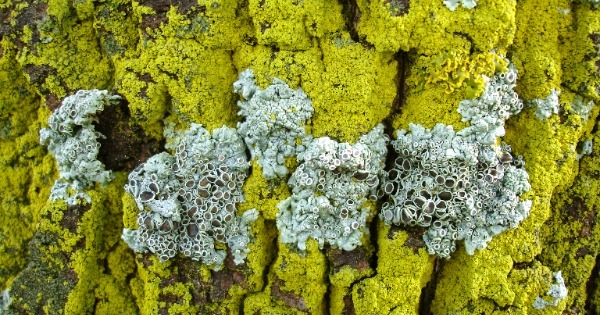The Science of Innovation: Moving the Roofing Industry Forward

By Duro-Last®.
These four women are making strides in R&D at Duro-Last.
According to the National Science Board’s Science and Engineering Indicators 2018 report, women make up half of the total U.S. college-educated workforce but only 28% of the science and engineering workforce.
When evaluating these numbers within the roofing industry, that figure is even lower. While the roofing industry as a whole is widely dominated by men, women continue to grow their involvement and make an impact. The Research and Development Team at Duro-Last®, Inc., is a diverse group of both women and men that work to safeguard stringent manufacturing standards and drive innovation to meet the evolving needs of the industry. Below, four women from Duro-Last’s Research and Development Team share their experiences and thoughts on the technical side of the roofing industry.
-
Katie Chapman, Research and Development Analyst
-
Lauren Moore, Research and Development Analyst
-
Cindy Dana, Research and Development Analyst
-
Mary Koutras, Research and Development Technical Leader
While technical careers have historically been dominated by men, women continue to close the gap and make lasting impacts in their respective fields. Why do you think it is important for both women and men to be equally involved and represented in roles like Research and Development?
-
Chapman: Every time I go to an industry meeting, I see more women there, and it gives me such a sense of pride. There is still a long way to go and there are still more men than women at the table, but we’re heading in the right direction and its inspiring to see. Our industry can only get better, stronger, and more innovative, the more diverse we are.
-
Moore: I think that we each bring different, important perspectives into the process that helps solve problems and develop solutions that couldn’t have been managed alone. The more people at the table offering critical insight to products, processes, and the industry as a whole, the more impact we’re going to be able to achieve.
-
Koutras: People bring all different types of experiences and skillsets to the table, regardless of their gender. It’s important that technical fields like Research and Development embrace this type of diversity because the more people questioning and pushing to make things better, the more innovative we all become.
-
Dana: Different experiences shape how people approach their work and how they formulate ideas. The best way to ensure that all options and opportunities for growth are explored is to have a diverse group of people providing input.
What do you think people would be most surprised to know about the Research and Development field?
-
Koutras: I think people would be surprised to know just how many different types of Research and Development career paths there are. This field is so much more than scientific formulations and mixing chemicals; there are positions that focus on new product development and innovations, budget and cost savings analysis, raw material sourcing and testing, engineering, environmental impact analysis, and so much more. There is no cookie cutter path to a career in Research and Development.
-
Moore: A lot of people are surprised to find out how involved Research and Development is at all stages of a product or process. For our team, our job is to protect the customer from beginning to end with robust raw material evaluation, product testing, quality assurance, and innovation. The diversity of our backgrounds allows us to think outside of the box and provide our customers with products and services that make their jobs easier.
-
Chapman: In regards to our team specifically, most people are surprised to find out just how different our backgrounds are, which is what ultimately makes our team so strong and unique. We all have our specialties, but since we’re so different we can learn from and challenge each other to really foster a culture of innovation and creative thinking. I don’t think people realize just how creative this career can be.
-
Dana: Most people are surprised to find out everything that goes into the end products they’re using. From sourcing and qualifying a wide variety of raw materials, product manufacturing and testing, to continual quality assurance, Research and Development is involved in all of it to ensure the highest quality end products for the customer.
In your opinion, how do technical roles like Research and Development contribute to the growth and evolution of the roofing industry?
-
Dana: From my perspective, Research and Development has an impact on not only the continuous improvement of products, but the industry as a whole. The nature of our work means that we are very aware of the raw materials being used, the chemistry involved in creating a product, and how those activities impact the world around us. By pushing to be more innovative in our manufacturing processes, we are pushing the industry as a whole to take a look at how it can be more sustainable.
-
Chapman: Research and Development is responsible for creating what’s next. We’re always looking for new ways to make roofing easier, more durable, more sustainable…this work shapes our industry over time and we have a key role in influencing how our industry is going to grow and evolve 10, 15, 20 years from now.
-
Koutras: The work that Research and Development does really creates a foundation for product improvement and innovation. We are able to anticipate the needs and direction of the industry based on what customers are asking for, and then develop products to meet those needs before they’re even fully recognized. On top of that, our work drives the conversation around environmental impact and sustainability, which has a huge impact on how products throughout the industry are sourced and manufactured.
-
Moore: Sometimes our customers don’t know what they want until we give it to them. Our Innovation Team is great at thinking 3 to 5, even 10 years, in advance of the industry to keep our products on the cutting edge of evolving needs. Technical roles help provide innovative solutions to problems that customers might not even know they have, making their jobs and labor more efficient.
What is the most memorable project you have been involved in?
-
Moore: I’d say my most memorable project was helping to develop the John R. Burt Innovation Lab. It was challenging and fun to develop different floor plans and fit the equipment into the room creatively and efficiently. Learning how to use the lab scale extruder has allowed us to explore more innovative developments while reducing waste and avoiding interruptions to manufacturing timelines, which has been hugely beneficial to the company as a whole.
-
Chapman: I wouldn’t say I have a most memorable project, but I’m most proud of the new products we launch at our National Sales Seminar every year. It’s very rewarding to see our contractors get excited about products we’ve spent so much time on, and then seeing those products in the field.
-
Koutras: I can’t say that I have a favorite project because they’re all memorable. Each project is so different and requires me to pull on my problem solving skills, teamwork, education, and experience. I will say that the best part about my job is the different people I get to work with, inside and outside of our team. It’s always a great experience for me to be able to collaborate with people that bring new concepts to the table and see something tangible come from that.
-
Dana: I’m relatively new to this position, so I can’t say that I have a most memorable project just yet. But I am definitely looking forward to developing innovative solutions that exceed customer needs, and ensuring the quality and continuous improvement of our products.
What advice would you give to young women and men that are interested in pursuing technical careers?
-
Chapman: Technical careers sometimes don’t seem the most glamorous, but if you want to influence change in any industry and truly make a lasting impact, technical careers are where the work is being done.
-
Dana: Arm yourself with knowledge about your strengths to help guide the path you take in the Research and Development field. There are a lot of great resources that help you discover what areas you excel in and what fuels your fire. This can be invaluable when making decisions on how to get involved in a technical role.
-
Moore: Don’t be afraid to get your hands dirty and learn how things work; the best way to improve a process is to throw yourself into it head first. And learn how to speak to people of all walks of life without judgement, you never know what valuable information they might have to offer.
-
Koutras: Get experience anywhere you can. Take an internship and get your feet wet, attend industry events and network with people that can mentor and guide you down the right path. Many events have student pricing which provides a fantastic opportunity to learn more and hone in on what you want to specialize in. Get out there and show the initiative; people will notice!
Learn more about Duro-Last products.
Original article source: NWIR























Comments
Leave a Reply
Have an account? Login to leave a comment!
Sign In